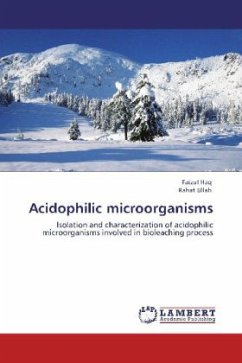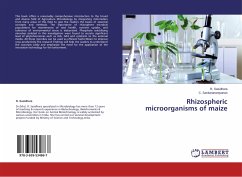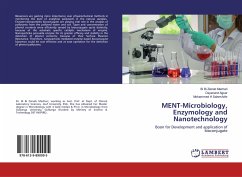
Acidophilic microorganisms
Isolation and characterization of acidophilic microorganisms involved in bioleaching process
Versandkostenfrei!
Versandfertig in 6-10 Tagen
39,99 €
inkl. MwSt.

PAYBACK Punkte
20 °P sammeln!
Environments in which extremely acidophilic microorganisms are found occur in many places on Earth. Some are formed naturally while others are the result of human activity. Acidic environments formed outside of human intervention are typically areas with volcanic activity. Inorganic sulfur compounds are brought to the surface where they are oxidized to sulfuric acid. Sulfide-containing minerals may also be exposed or brought to the surface as a result of mining activity and when oxidized these minerals give rise to acid and metal pollution known as acid mine drainage. Biological oxidation of r...
Environments in which extremely acidophilic microorganisms are found occur in many places on Earth. Some are formed naturally while others are the result of human activity. Acidic environments formed outside of human intervention are typically areas with volcanic activity. Inorganic sulfur compounds are brought to the surface where they are oxidized to sulfuric acid. Sulfide-containing minerals may also be exposed or brought to the surface as a result of mining activity and when oxidized these minerals give rise to acid and metal pollution known as acid mine drainage. Biological oxidation of reduced sulfur compounds is very much faster than chemical oxidation and, as a result, most extreme acid environments are created by biological activity. Although iron is an abundant element on the surface of Earth, it is rapidly oxidized and forms insoluble precipitates in neutral environments. However, iron is readily soluble in low pH environments and the cycling of iron between its reduced ferrous and oxidized ferric forms plays an important role in the ecology of acidic environments.












